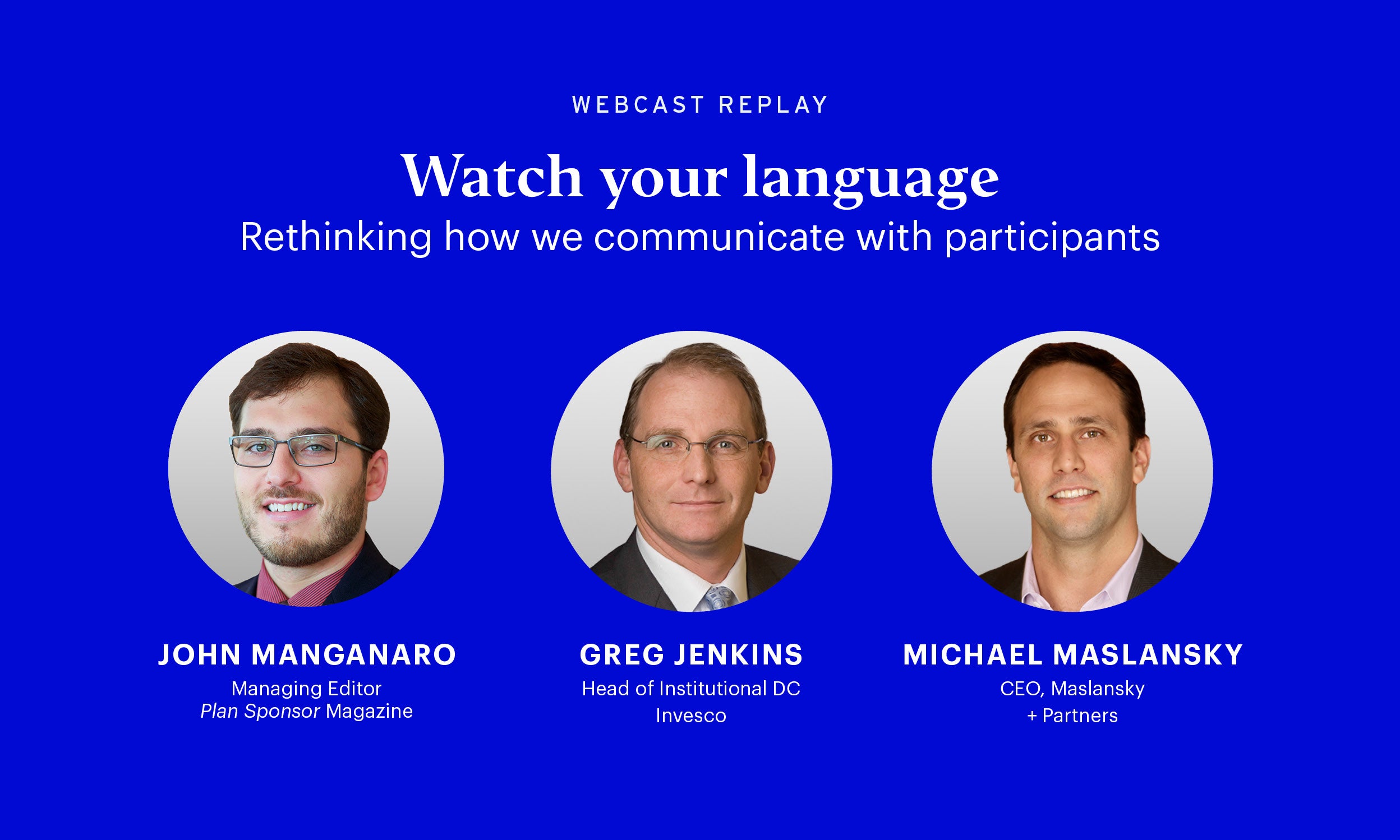
Watch your language
Many plan members often find their DC plans confusing and wish for clearer language to help them understand their options and make more informed decisions. Let's rethink how we communicate with them.
Get the white paper
Webcast Replay
Watch a replay of our 2021 Defined Contribution Language research where we shared insights and guidance into the impact language can have on plan members.
How can plan sponsors rethink plan member communications?
Learn more from our three key insights on how to communicate with plan members.
Our 2021 Watch Your Language study took a closer look at the language of defined contribution plans.
Based on more than 10 years of research, we believe a disconnect remains between what plan sponsors say and what plan members hear.
Alongside word specialists, Maslansky + Partners, we conducted online surveys with 610 defined contribution plan members working for large employers – averaging over 5,000 employees – in Canada.
The study focused on the impact language can have on members’ overall understanding of the plan’s investment menu, professionally managed options, and how best to communicate retirement income.
We found that the right language can make a big difference in the way plan members responded to investment menu options.
Members gravitated toward clear, descriptive titles and positive framing, along with language that communicated support with the investment process.
Similar to findings from our 2019 Forgotten Participant study, there’s clear interest for more professionally managed options such as target date or target risk funds on the investment menu. 65% of members preferred target date and target risk funds over single asset class options.
Simple framing, short descriptors, and a goals-based approach can all help differentiate target date and target risk funds on the menu.
Finally, we found that members were eager for their employers to talk to them about the transition from accumulating wealth at work to generating income.
However, only 1 in 4 survey participants received information from their employer about how to turn their retirement plan savings into retirement income.
To learn more about the findings of our 2021 Watch your Language DC research study, visit our website or contact your Invesco DC professional.
Research overview
Our 2021 study focused on the impact of language on plan members’ overall understanding of the plan’s investment menu, professionally managed menu options, and how best to communicate retirement income.
Insight 1: Demystify the investment menu with the right language
Plan members were attracted to the term that implied a diversified approach. Clear language and descriptive titles can help members more easily understand their investment options.
Insight 2: Position target date and target risk clearly to help plan members find the right fit
While male and female survey participants responded equally to single asset class options, our research revealed a difference in their preferences for TDF and TRF options.
Insight 3: Jumpstart the retirement income conversation now
Plan members are eager for plan sponsors to communicate with them about the transition from accumulating wealth to generating retirement income. Many plan members weren’t aware of their DC plan options at retirement.


Get the full white paper
We connected with over 600 defined contribution (DC) plan members who shared their views through an online survey. Our goal was to gain further insight into how language can impact plan members’ overall understanding of the plan’s investment menu, professionally managed options within the menu, and how to create retirement income.

